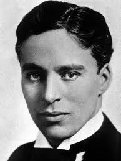A comb is a tool consisting of a shaft that holds a row of teeth for pulling through the hair to clean, untangle, or style it. Combs have been used since prehistoric times, having been discovered in very refined forms from settlements dating back to 5,000 years ago in Persia.
Weaving combs made of whalebone dating to the middle and late Iron Age have been found on archaeological digs in Orkney and Somerset.
Combs consist of a shaft and teeth that are placed at a perpendicular angle to the shaft. Combs can be made out of a number of materials, most commonly plastic, metal, or wood. In antiquity, horn and whalebone was sometimes used. Combs made from ivory and tortoiseshell were once common but concerns for the animals that produce them have reduced their usage. Wooden combs are largely made of boxwood, cherry wood, or other fine-grained wood. Good quality wooden combs are usually handmade and polished.
Combs come in various shapes and sizes depending on what they are used for. A hairdressing comb may have a thin, tapered handle for parting hair and close teeth. Common hair combs usually have wider teeth halfway and finer teeth for the rest of the comb. Hot combs were used solely for straightening hair during the colonial era in North America.
A hairbrush comes in both manual and electric models. It is larger than a comb, and is also commonly used for shaping, styling, and cleaning hair. A combination comb and hairbrush was patented in the 19th century.
Combs can be used for many purposes. Historically, their main purpose was securing long hair in place, decorating the hair, matting sections of hair for dreadlocks, or keeping a kippah or skullcap in place. In Spain, a peineta is a large decorative comb used to keep a mantilla in place.
In industry and craft, combs are used in separating cotton fibers from seeds and other debris (the cotton gin, a mechanized version of the comb, is one of the machines that ushered in the Industrial Revolution). A comb is used to distribute colors in paper marbling to make the swirling color patterns in comb-marbled paper.
Combs are also a tool used by police investigators to collect hair and dandruff samples that can be used in ascertaining dead or living persons' identities, as well as their state of health, toxicological profiles, and so forth.
If you want to read more, go here: https://en.wikipedia.org/wiki/Comb
- 3/4 cup all-purpose flour, divided
- 1/2 cup plus 3 tablespoons light brown sugar, divided
- 1 teaspoon ground cinnamon
- 3 cans (16 ounces each) sliced peaches, drained
- Cooking spray
- Preheat oven to 350º. Coat an 8-inch square glass baking dish with cooking spray.
- In a large bowl, combine 1/4 cup flour, 1/2 cup brown sugar, and cinnamon; mix well. Stir in peaches until evenly coated. Place in a prepared baking dish.
- In a small bowl, combine remaining flour and brown sugar; sprinkle over peach mixture.
- Coat the top with cooking spray and bake 25 to 30 minutes, or until top is lightly browned. Spoon into individual serving dishes.

1924 – Henry Mancini, American composer (d. 1994)
1927 – Edie Adams, American actress (d. 2008)
1935 – Bobby Vinton, American singer
- In 1894 stockbroker Lemuel Benedict ordered “buttered toast, poached eggs, crisp bacon, and a side of Hollandaise” at the Waldorf Hotel. They were so impressed with the dish that they put it on the menu substituting ham and English muffins in place of the bacon and toast.
- In the early 18th century, Pope Benedict XIII liked an egg dish so much that he requested it time and time again. It is also believed that Pope Benedict XIII had an illness which added to his desire for this particular egg dish, hence the name Eggs Benedict.












